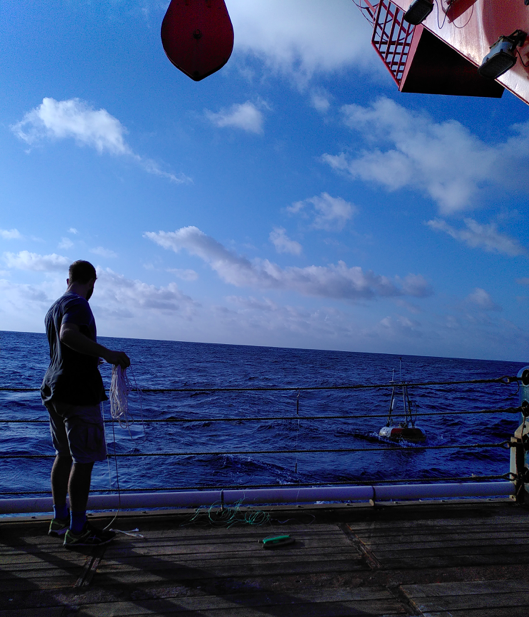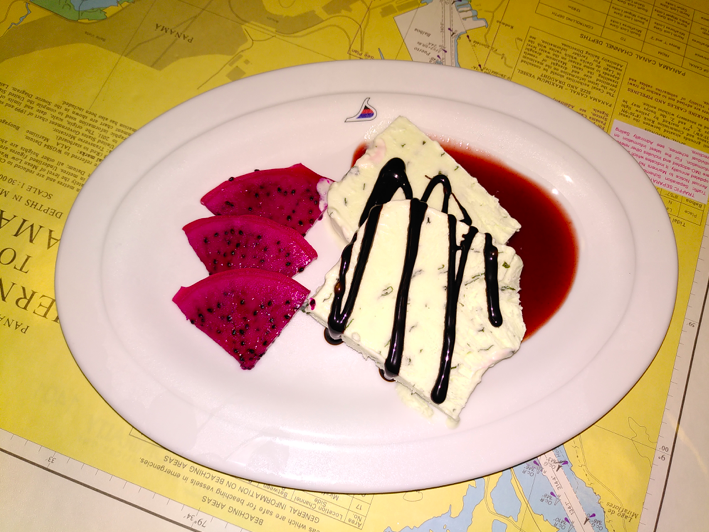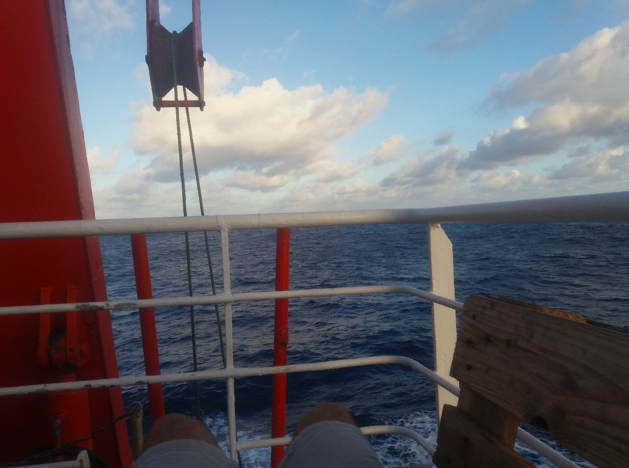During my Bachelor program, me and my fellows learned a lot about the physics of ocean properties, circulation and much more. Apart from the complex formulas, the most interesting parts were the plots, which showed the properties of ocean waters and their dynamics all around the world. In simple terms, we used big datasets and analysed them. But we never really imagine how difficult it could actually be to sample and to pre-process the data. We always obtained processed data and still it was a lot of work for us to figure out how to plot and analyse the data in a proper way. When I received a mail from Rebecca, saying that I will the chance to be part of M159, I did not realise how much I would learn about data sampling and its difficulties. It has been quite an experience…

Photo by Luisa Sarmiento
As the team and I arrived on the ship, it took roughly a day to get from Recife to our first mooring recovery along the 10°S section. Moorings measure temperature, salinity, pressure, velocity and many other variables with instruments that are connected to a steel cable of a few kilometres. The data is needed to understand the system of currents along the coast of Brasil. In addition, we were hoping to “spot” some eddies in the deep western boundary current. These eddies are like the cyclones in the atmosphere and transport big amounts of water along the coast in the deep ocean (below 1000m). Many people were needed to get all the instruments out of the water. It was quite an interesting work and gave me a glimpse of how hard it is to get in-situ data from the ocean… In perfect weather conditions… We did not even have a rough swell.
The recovery worked smoother as we gained experience. I was surprised how few instruments were installed along each of the kilometre-long cables. Most of the recovery work was done by our technicians and the amazing seaman. Our job was to take care of the instruments afterwards. But given the cost of each of those instruments, 10.000€ and more it should not surprise you. One recovery operation could easily take a few hours. I was looking forward to find out if the recorded data will support the scientific ideas and hypothesis of Marcus Dengler, one of the senior scientists in our working group. Now, after seeing the operation and all the work, I realised that it will take a long time to completely analyse the entire data. This is reasonable as there are quite a lot of instruments, and each one needs to be checked by the technicians and some of the recorded data needs to be calibrated. For instance, the calibration of temperature and salinity have instruments connected to a CTD Cast (will be explained below) and the measurements are calibrated as accurate as possible (Temperature and Salinity to 4 at least 3 digits after the comma).
Another new instrument that I worked with is the CTD, an electronic measurement equipment, which measures even more variables continuously in different depths (from 10 meters to 5000 meters below surface). However, measuring only with the CTD will not give good results in a scientific sense (it just gives you relative but not absolute values). Therefore, the exact salinity and oxygen need to be measured afterwards with the water samples taken from each depth with the CTD Rosette. So water from the sea floor ran over my hands, which is a bit funny to imagine.
Furthermore, the planning and organisation of such a cruise is extremely time intensive (as this starts at least a year before the expedition). Nevertheless, this data collection is crucial to understand oceans, which are vital components of the earth system. It is also important to understand how these systems are changing in a world with much human activities and Greenhouse Gas emissions.
These knowledge is very valuable, but also be aware that it is hard work. But if it is your passion, then it might feel like a nice thing. For those coming after me, I will recommend that you learn a lot on how the instruments actually sample the data and how processing works as it helps to better analyse this data. But for non-Oceanographer coming on board, you should know that the food is incredibly good here. Think of scallops, fresh fish, awesome cake (and I love good cake!) and of course perfectly cooked potatoes and many more delicious dishes. Those kitchen gods were magically creating in a rolling ship !

Photo by Luisa Sarmiento
In addition to that, the view from the top deck of the Meteor is unforgettable! And there are not many people who can lay on a bench and watch horizon slowly move while listening to a good song after work (or in between shifts). So, whoever has the chance to work on Meteor…do it. It is worth it and you will meet a lot of interesting people.

Photo by Nils Niebaum
Written by Nils Niebaum, GEOMAR 2019
Do you have a medicine on board for any emergency case?
Yes, we have a very nice doctor on board.
But luckily we just needed her because some people got a sore throat due to the AC 🙂